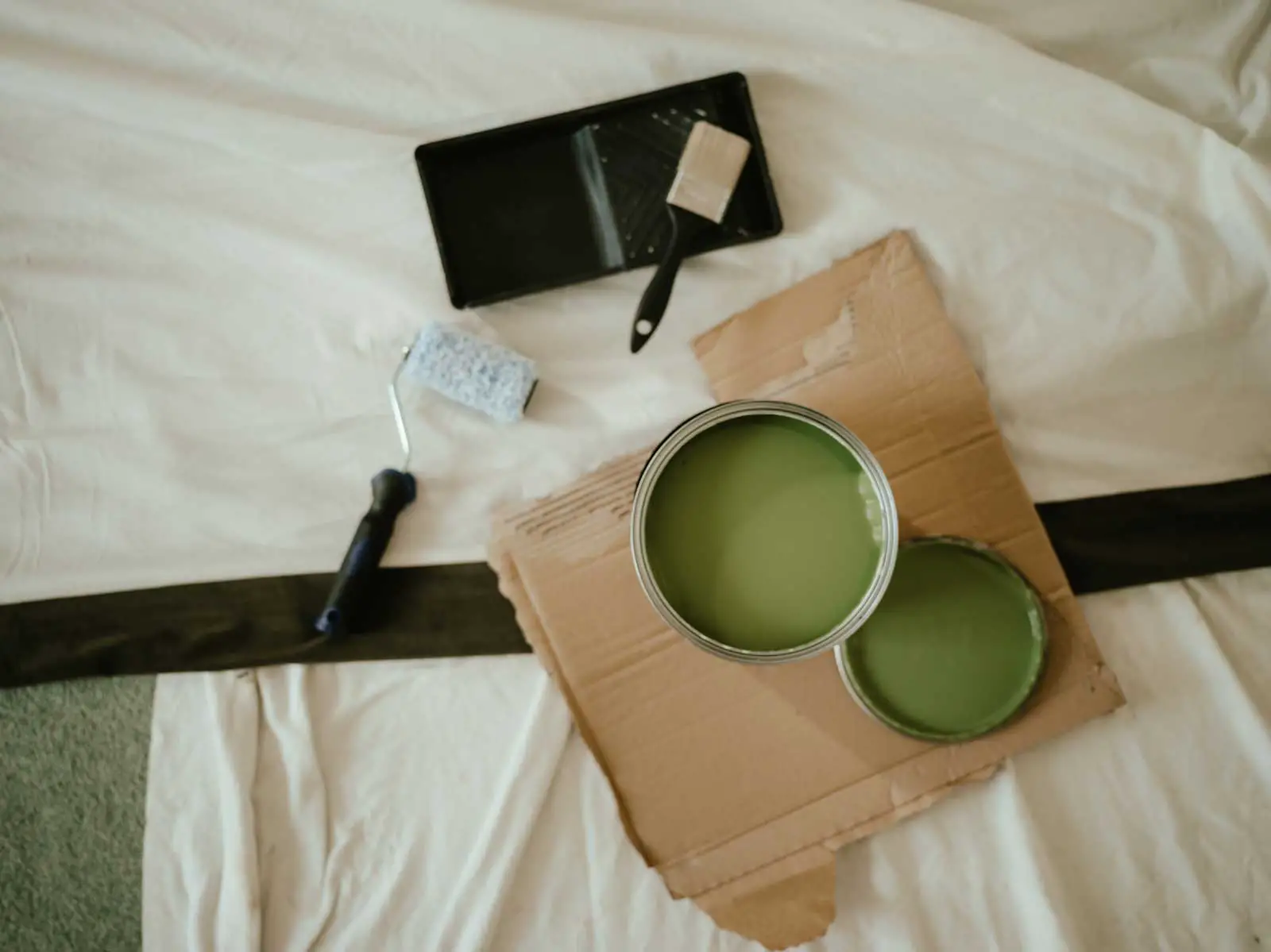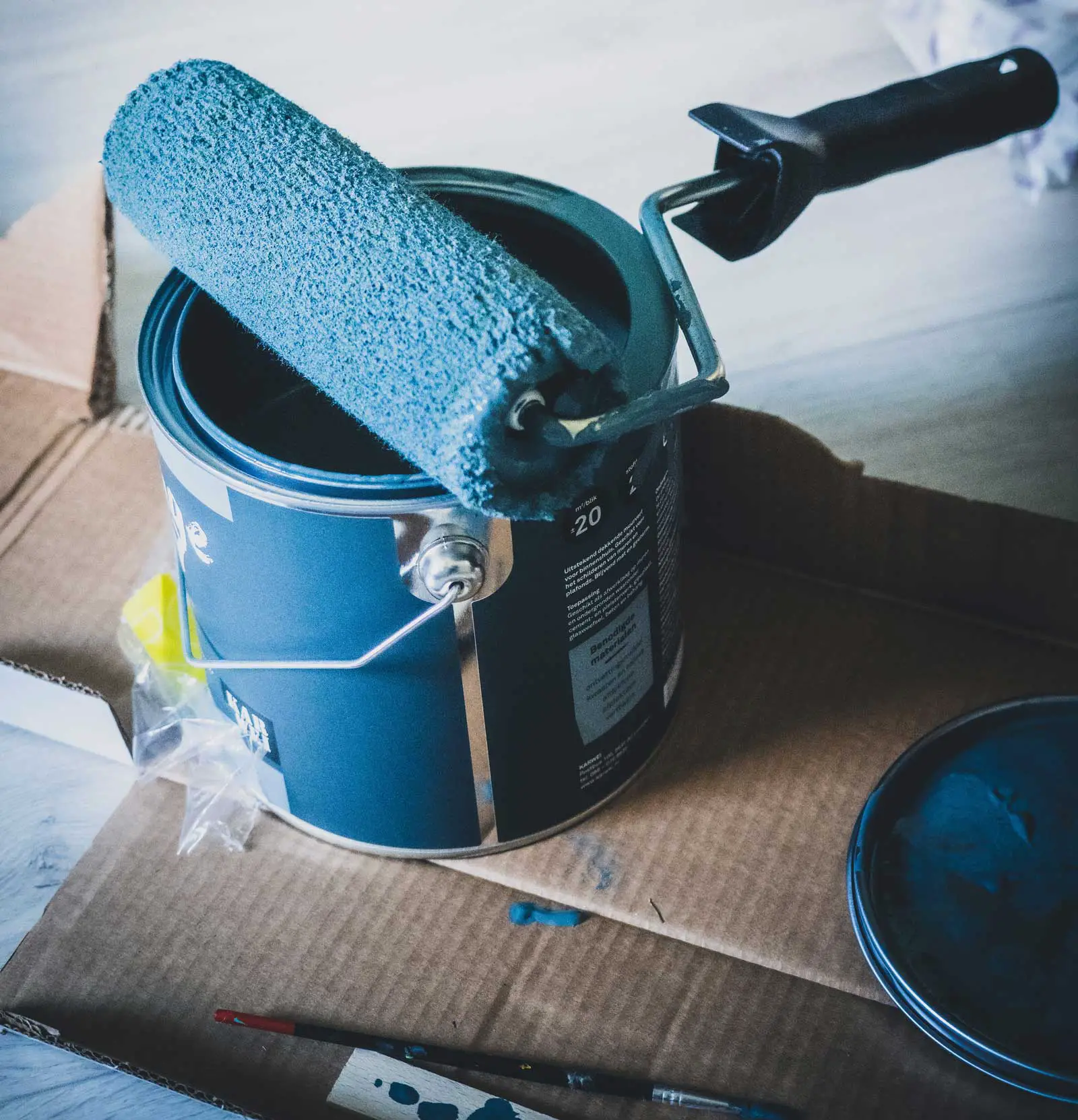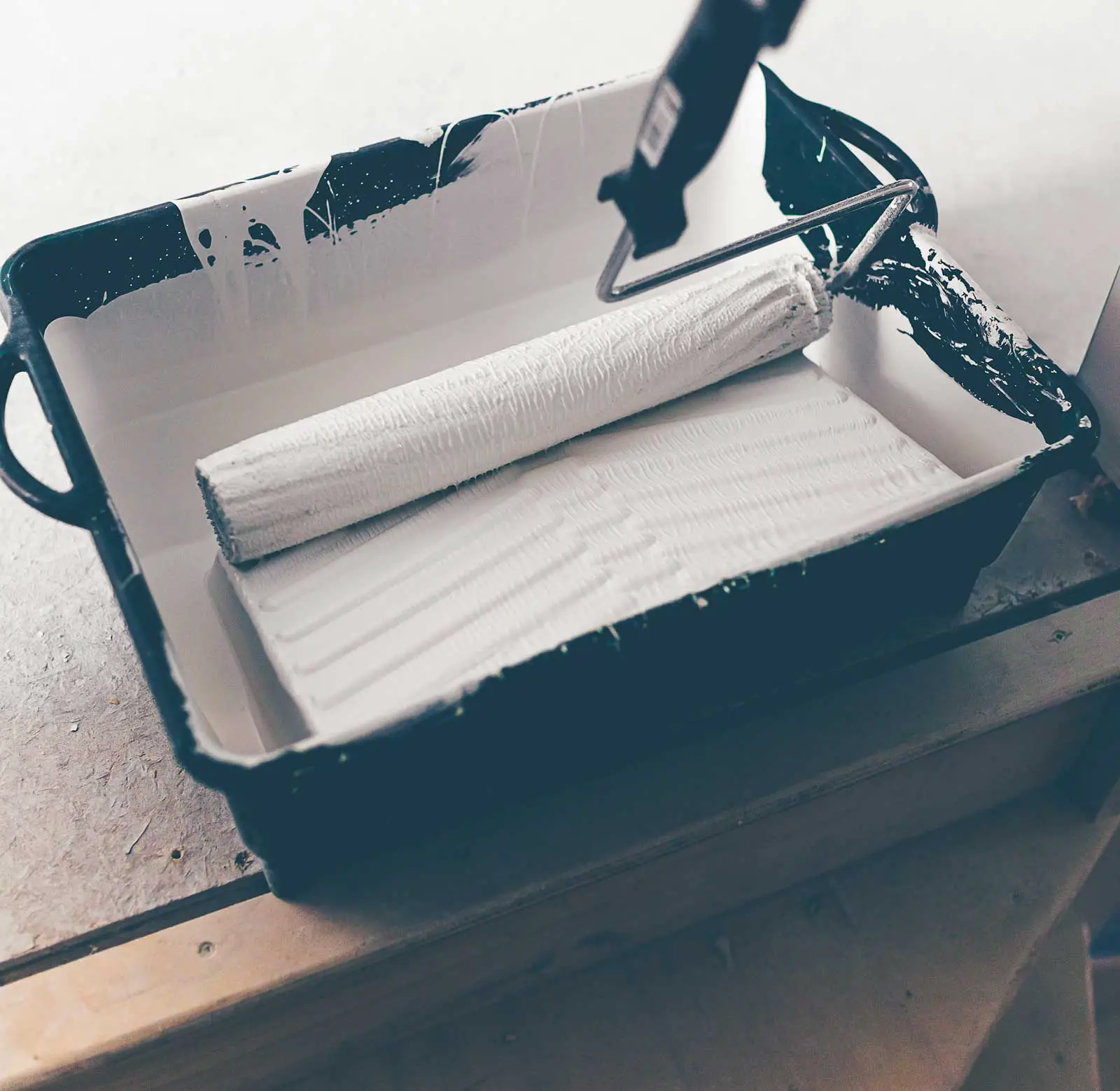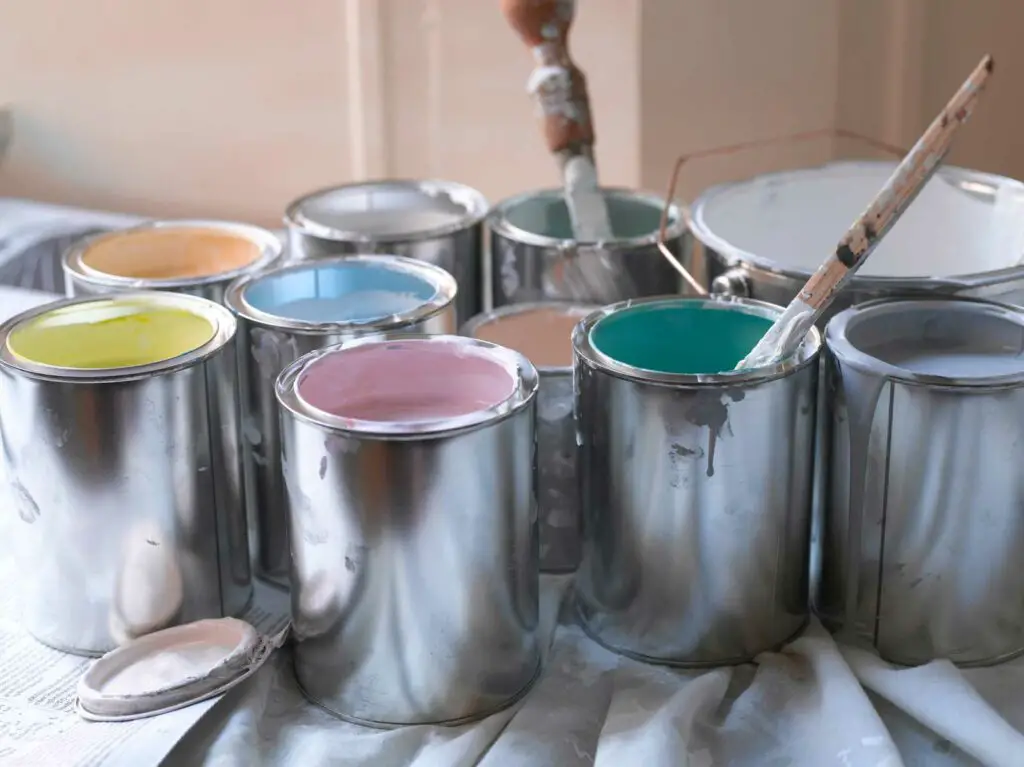What do you do with leftover paints?
Everyone knows that interior paint is different from exterior paint. Whether you repainting a wall in your kitchen or painting a fence outside, it’s important to choose the right kind of paint.
But what if you have leftover gallons of both types of paint lying around? Can you mix interior and exterior paints together?
Yes, you can mix interior and exterior paint, but there are some considerations that need to be taken into account. The types of paint that can be mixed depend on their base requirements, and there are risks associated with mixing paint, like changes in the durability and color of the paint. Other factors like surface type, paint finish, temperature, weather conditions, and the presence of chemicals and additives can affect the mixing process. Proper handling of the mixed paint can impact the quality and longevity of the paint.
So what happens when you mix indoor paint with paint made for exterior surfaces?
What paint components just won’t mix?
Is there anything you need to know storing mixed paint?
In this article I’ll discuss when it’s ok when you should avoid it plus tips on storing any leftover paint.
By the way – before we get too far along here, if you want to connect with other homeowners and builders and get more great ideas for your home to make your space the best join my free private Facebook group, Remodel Reality here.
 Can Interior and Exterior Paint be Mixed?
Can Interior and Exterior Paint be Mixed?
When it comes to mixing paint, there are some types of paint that can be mixed, and others that cannot. The short answer in some cases for mixing interior paint with exterior paint is yes, but before you attempt to do so, there are some factors that you you need to consider.
For starters, VOC emissions (Volatile Organic Compounds) from paint is an important factor to think about. These gases can be hazardous to your health and your environment, so it’s essential that you understand the concentration off-gassing of any paints you plan on mixing.
In addition, exterior paint typically has a higher concentration and off-gassing of VOC than any other type of paint; this can be especially dangerous if used inside for interior purposes since VOC’s can damage your indoor air quality over time.
Additionally, it’s essential that both of the paints have the same base; oil-based paints should only be mixed with other oil-based paints, and water-based paints can only be mixed with other water-based paints.
It’s also important to note that when combining different brands of paint, there can be unpredictable colors due to the difference in ingredients between each one. This could lead to a “spotty” finish on your walls or furniture after drying due to lack of consistent color coverage during application and curing.
If after considering these risks you still decide to mix the two types of paint, it’s best practice to mix them in a well ventilated area using a drill or handheld mixer. Wear gloves that are safe for use with painting materials and a mask as additional protection against fumes escaping while these paints are being mixed together.
Additionally, sift through for clumps whenever possible as clumping may cause difficulties in handling during application processes as well as inconsistency in surface finishes once dried and cured. And don’t forget, exterior paints take much longer to cure and can be off-gassing for months.
To summarize: While it is technically possible for combine interior and exterior paint, keep in mind their key differences with regards to base ingredient composition, brand origin, varying amounts VOC off-gasses present which require special aid/ventilation during mixing/application processes—not forgetting additional sifting steps when necessary—and prolonged amount of time to cure completely. This all depends on how comfortable you feel doing so responsibly without compromising safety matters both within yourself but also elsewhere around where the project site will lie after job completion.
| Key Characteristics | Details |
|---|---|
| VOC Emissions | Consider the level of off-gassing present in each paint type, especially for exterior paints which have higher VOC concentration. |
| Paint Base | Ensure that both paints have the same base (oil-based paints with other oil-based paints and water-based paints with other water-based paints) for proper mixing. |
| Brand Differences | Mixing different brands of paint can lead to unpredictable color outcomes due to different ingredients between each brand. |
| Mixing Process | Mix the paint in a well-ventilated area using a drill or handheld mixer. Wear gloves and a mask for safety, and sift through for clumps to avoid inconsistency in surface finishes once dried and cured. |
| Paint Storage | Store any remaining paint mixture immediately in an airtight container once all application is done. |
 Understanding Interior and Exterior Paint
Understanding Interior and Exterior Paint
When choosing the right paint for a project, it’s important to understand the difference between interior and exterior paints. Interior paint is intended for use inside homes and buildings, while exterior paint is formulated to withstand harsh weather conditions and outdoor use. Exterior paint has higher resistance to elements such as moisture, temperature changes, and UV rays than interior paint.
In addition to resistance to elements, there are several types of paints that can be used for indoor and outdoor applications. Oil-based paints provide better adhesion and durability, but they have a strong odor and release more VOCs so they’re not always the best choice for indoor use. Latex, or water-based paints are generally better for interior projects due to their fast drying time, low odor, and lower releases of VOCs when compared with oil-based paints.
VOCs are chemicals released from paint as it dries that can contribute to air pollution and have adverse health effects on people who suffer from respiratory problems. For this reason, low VOC or zero VOC formulations are available from some manufacturers in order to reduce environmental impact.
The finish of the paint can also affect its overall look after it dries as well as its durability over time. Flat paint or matte finishes hide imperfections well while high gloss finishes work best in high traffic areas or surfaces that require easy cleaning but will show any flaws in the surface underneath them. The finish also has an effect on durability; exterior paint must be able withstand heat changes while interior needs abrasion resistance against scuffing and staining over time.
The pigments used in a given formulation affects many variables including color accuracy, opacity and fading which should all be kept in mind when selecting a product. Selecting the right brand of paint is also key; each manufacturer uses different formulations so combining paints from different brands without considering this could lead to unpredictable outcomes that you may wish to avoid by sticking with one brand throughout your project. In order to ensure consistency throughout your project it’s important you follow each manufacturer’s preparation, application & maintenance recommendations which often vary for each type of product out there depending on the intended application.
Different Types of Paint
There are several different types of paint available, each with its own unique features and benefits.
Latex paint is a popular choice for both interior and exterior projects. It’s water-based, which means it’s easy to clean up with soap and water. Plus, it dries quickly, so you can finish your project faster. Latex paint also has low levels of VOCs (volatile organic compounds), making it an eco-friendly option that’s safer for human health.
Oil-based paint is another great choice if you need a durable, long-lasting finish. This type of paint uses a solvent as its base, which makes it more resistant to chipping, cracking, and peeling than latex paint. However, oil-based paints do take longer to dry than latex paints.
Water-based paint is similar to latex paint in that it uses water as its solvent instead of synthetic resins. It’s also eco-friendly due to its low VOC levels and dries quickly like latex paint. Water-based paints come in a variety of colors and finishes just like other types of paints.
Acrylic paint is another versatile option that can be used on many different surfaces including wood, metal and plastic. It uses acrylic resins as its main component and has low VOC levels making it safe for indoor use. Acrylic paints also dry quickly and are easy to clean up with soap and water.
When choosing the right type of paint for your project, don’t forget about the different finishes available such as flat, satin or semi-gloss. Flat finishes have low glossiness and are best suited for areas that don’t require much cleaning such as ceilings or walls while satin finishes have higher glossiness making them more durable and easier to clean perfect for high-traffic areas like hallways or bathrooms. Semi-gloss finishes have the highest level of glossiness making them the most durable and easiest to clean out of all three finishes ideal for doors or trim.
Selecting the right type of paint depends on your specific needs and preferences. If you’re looking for an eco-friendlier option that’s easy to apply then latex or water-based paints are good choices while oil based paints are ideal when durability is needed but may emit higher VOCs. Acrylic paints offer versatility across many surfaces while different types of finishes provide options according to usage requirements ensuring long-lasting results from your painted surface.
| Paint Type | Description | Best Used For | Pros | Cons |
|---|---|---|---|---|
| Matte Paint | Flat, non-reflective finish | Walls with surface imperfections or flaws | Hides imperfections well, great for a cozy, muted look | Not very durable, difficult to clean |
| Satin Paint | Soft sheen, low reflective finish | High-traffic areas, like hallways or doors | Easy to clean, more durable than matte | Can highlight surface imperfections, not very forgiving of brush strokes |
| Semi-Gloss | Glossy finish, high reflectivity | High-moisture areas, like kitchens or baths | Very durable, resists moisture and stains well | Can be difficult to apply without visible brush strokes |
| High-Gloss | Shiny, mirror-like finish | Woodwork, cabinetry | Very durable, easy to clean, highlights architectural details | Very reflective, can highlight imperfections, requires very precise application |
 Effects of Mixing Different Types of Paint
Effects of Mixing Different Types of Paint
When you mix different types of paint, you need to keep in mind that the final result may not be what you are expecting. Mixing paints with different formulations and pigments can lead to an uneven color and texture, giving your paint job a shoddy appearance. To avoid such issues, it’s crucial to mix the paint thoroughly and evenly.
It’s important to note that even if you use the same type of paint, if they have different formulas or have been manufactured by different brands, they may not blend properly. Therefore, it’s best to test a small amount of mixed paint before applying it to the entire surface.
Mixing oil-based and water-based paints is not recommended because they do not blend well. Oil-based paints usually have a solvent-based formula that will resist water-based formulas and make them hard to mix. The result is likely to be an inconsistent finish with poor adhesion to the surface. For this reason, it’s also not advisable to use water-based paint outside where it’s exposed to harsh weather conditions as it may not be durable enough.
Indoor paint is designed for indoor use only and won’t withstand outdoor elements such as moisture, UV rays, and other hazards. Using indoor paint outside is not recommended unless it’s for touch-ups or small projects where long-term durability is not a concern.
When mixing paints, other factors you need to consider include the base, paint finish, color, temperature, weather conditions, chemicals and additives, resins, and volatile organic compounds (VOCs). Mixing different types of paint bases can create an unstable mixture that won’t work well. Paint finishes can affect the final appearance of mixed paints particularly when combining paints with significantly different finishes.
Colors can also change when mixing different types of paints making it challenging to achieve your desired hue. Temperature and weather conditions can affect drying time and curing of the paint while chemicals and additives used in the manufacture of these products can affect their properties too.
Resins are also a critical element in determining how durable your finished product will be after painting. Resins from different types of paints when mixed together may negatively impact how durable or flexible your painted surface will become over time leading to peeling or chipping.
Outdoor paints are higher in VOCs which are gas emissions that paint emits during its lifetime which can cause health problems when inhaled over extended periods- especially for exterior paints which emit more VOCs than any other kind thus posing more danger when used indoors.
To minimize risks associated with mixing paints always follow manufacturer guidelines carefully avoiding mixing incompatible products altogether wherever possible; ensure proper safety equipment like gloves & masks are used throughout; mix in well-ventilated spaces; test on inconspicuous areas first before using on visible surfaces.
| Factors to consider | Effects of mixing |
|---|---|
| Paint base | Mixing different types of paint bases can create an unstable and unworkable mixture, resulting in an inconsistent finish with poor adhesion to the surface. |
| Paint finish | Combining paints with significantly different finishes can affect the final appearance of the mixed paint, making it less reflective and shiny than the original finishes. |
| Color | Colors can change when different types of paint are mixed, making it challenging to match or achieve the desired hue. |
| Temperature and weather conditions | Temperature and weather conditions can affect the drying time and the curing of the paint. |
| Chemicals and additives | The type and amount of chemicals and additives in the paint can affect the mixed product. |
| Resins | Mixing resins from different types of paint can affect the final properties of the mixed paint, making it less durable or prone to chipping or peeling. |
| Volatile organic compounds (VOCs) | Exterior paint typically has a much higher concentration and off-gassing of VOC than any other type of paint, which can be harmful when used indoors. |
When it comes to mixing paint, it’s always best to follow the manufacturer’s guidelines and avoid mixing different types of paint unless they are compatible. Mixing paints can be unpredictable, and the end result may not be what you expect. To ensure a successful mix, there are several important steps to follow.
Firstly, it’s crucial to use proper safety equipment such as gloves and a mask when handling paint. Additionally, make sure that you’re working in a well-ventilated area to avoid inhaling any harmful fumes.
When mixing the paint, use a paint mixer or drill to thoroughly blend the pigments and additives together. This will help ensure an even distribution of color throughout the mixture. Before applying the mixed paint to your surface, it’s recommended that you test it on a small section first. This will help you determine whether or not the mixture is consistent and whether or not it will produce your desired results.
It’s essential to keep in mind that even if you’re using the same type of paint, if they have different formulas or come from different brands; they may not mix properly. Therefore, testing a small amount of your mixed paint before applying it over the entire surface is always recommended.
Storing Mixed Paints
If you do not store your paint correctly, the interior and exterior components will separate while they sit dormant in a shelf. This causes the heavier bits to sink to the bottom, making it troublesome to remix them into its original consistency. But with certain tips and tricks, we can make sure that our mixed paint stays of prime quality for future use.
To keep your “Frankenstein” paint in good condition, you need to make sure that you choose an airtight container. This will prevent any nasty fumes from leaking out and keep your paint fresh for longer. You should also label the container with important information such as the type of paint, base, paint color, and date of mixing. This will help you remember which mixture to use and avoid confusion.
When storing mixed paint, it’s best to keep it in a cool, dry place. This will help maintain the consistency of the paint over time. Avoid storing it in direct sunlight or areas with extreme temperatures as this can affect the chemical composition of the paint.
The shelf life of mixed paint depends on several factors such as the quality of the paint, how it was mixed, and how it was stored. Generally speaking, properly mixed paint should last up to two years if stored in a cool, dry place away from direct sunlight or extreme temperatures.
Over time, however, even well-stored mixed paints may begin to degrade in quality. They may separate or become thick and difficult to work with. If this happens, you may need to add a small amount of water or other chemicals to thin out or remix your “Frankenstein” mixture back to its original state.
It’s essential to remember that even well-stored mixed paints may not be as effective as when first mixed. To ensure that your old paints are still usable before starting any new projects with them, test them by painting a small area first and checking their texture and consistency beforehand.
Storing mixed paints properly is crucial if you want them to remain usable for future touch-ups or repainting projects; saving you both time and money in the long run!
Next Steps
Want to join others who are creating the most amazing home redesigns & renovations and get more tips, tricks and hacks on how to make your home the best it can be?
Join my brand new free private Facebook group, Remodel Reality to connect with other people like you to make your space the best!






